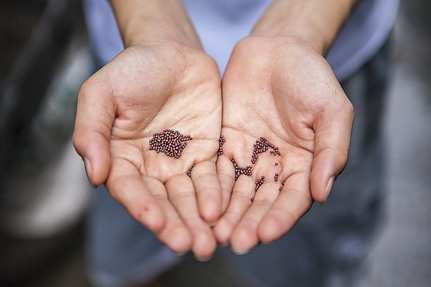Will old seeds germinate? We highly recommend that you not forget to test old seeds from the previous season to see how germinating they are. Let’s open the new gardening season in the middle of February with the first sowings for growing seedlings (or the first direct sowings outdoors). January is the ideal month to check the state of our seed supply. To do some plan. First, we ask ourselves, what do we want to grow this season, and which seeds do we have to buy?
Will Old Seeds Germinate? Is Such a Test Even Necessary?
Why do a seed germination test at all? Quality seeds (which germinate well) are the foundation of growing vegetables in the garden. Often, gardeners do not use all the seeds packed in individual seed bags in their gardens in one season. This way, the seeds of past seasons remain in our stocks. With the seasons, however, seed germination decreases (at different rates for different types of vegetables). Parsnips and onions germinate very poorly already in the second year and carrots in the third.
When the time comes to use the seed for growing seedlings or direct sowing in the garden, unfortunately, it can happen that we wait and wait, and the seed does not germinate at all (or really poorly). Thus, we waste precious time on the garden beds when we can already start growing vegetables. Therefore, it is highly recommended to check the germination of older seeds straightforwardly if we are not sure about the germination.
How Do We Check the Germination of Old Seeds?
The test is not demanding; it is best to do it at once for all the old seeds we want to check. Also, for example, turnip seed, which is “only” sown in July. Thus, before the gardening season, if necessary, we renew the seed with a newer one and know that we have a ready supply of seeds for the whole year.
Accessories:
- the seed we want to test
5 – 10 seeds for bags with a smaller number. Seeds like tomatoes, peppers, eggplants, cucumbers…
10 – 20 seeds for bags with a larger number. Seeds like lettuce, onions, leeks, carrots, spinach, and all brassicas, … - the appropriate number of pots or trays (depending on the number of different seeds)
- the substrate or compost
- watering can/sprayer
- water
Process
Prepare a pot or tray (you can use the same one and divide it into several compartments, where you sow the different ones to be tested), fill it with the substrate, and moisten it. Sow a couple of seeds each, cover with dry substrate and label accordingly (if several different seeds are sown in the same pot/tray). Germinate in a room with 18° to 22° degrees. We then observe how well the seeds will germinate and thus quickly see if any of the tested seeds need to be renewed.
The small sprouted plants will be a kind of microgreens that can be eaten after the test. This applies especially to salads and sauerkraut. A little less for tomatoes, peppers, and eggplant, for example.
